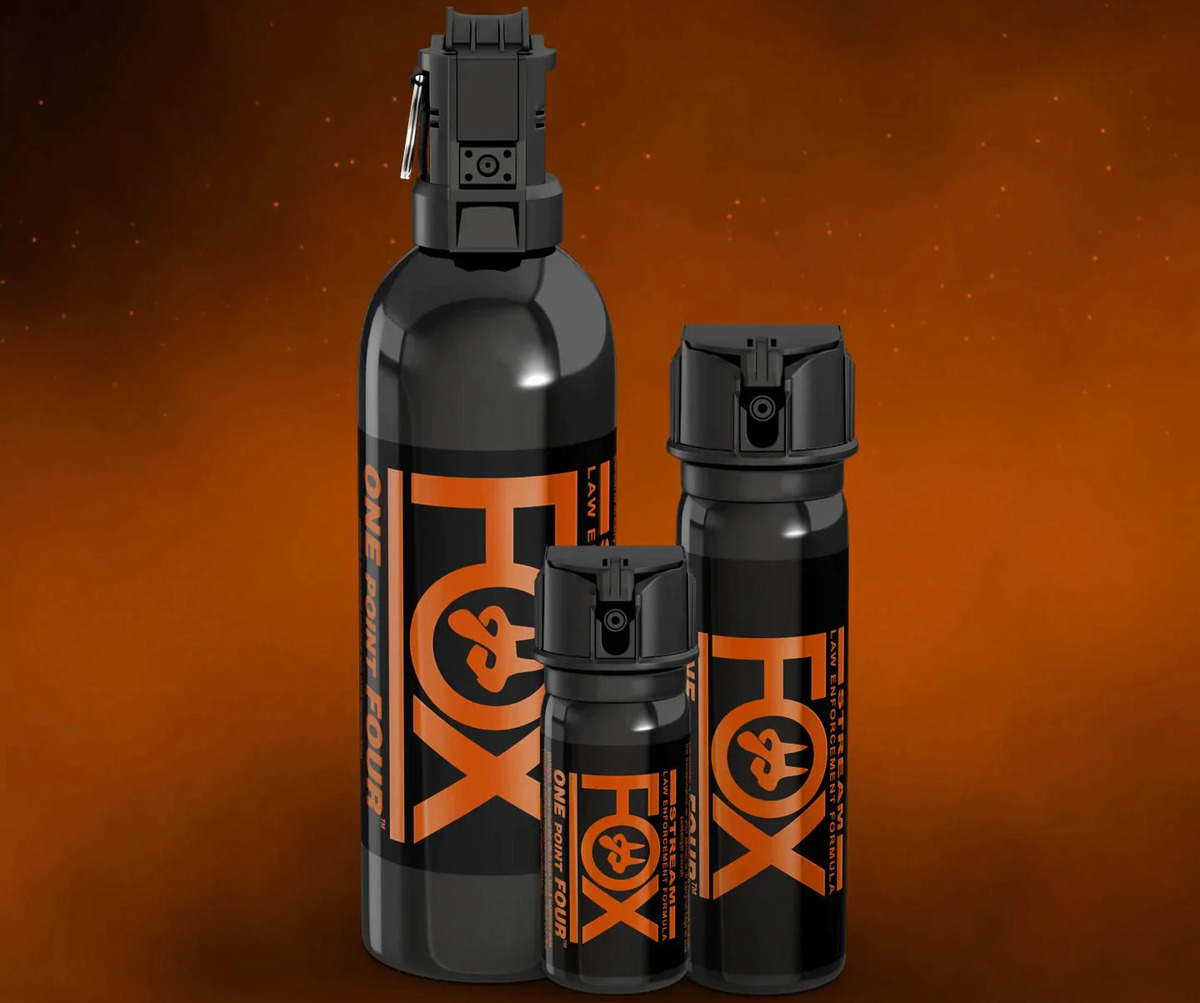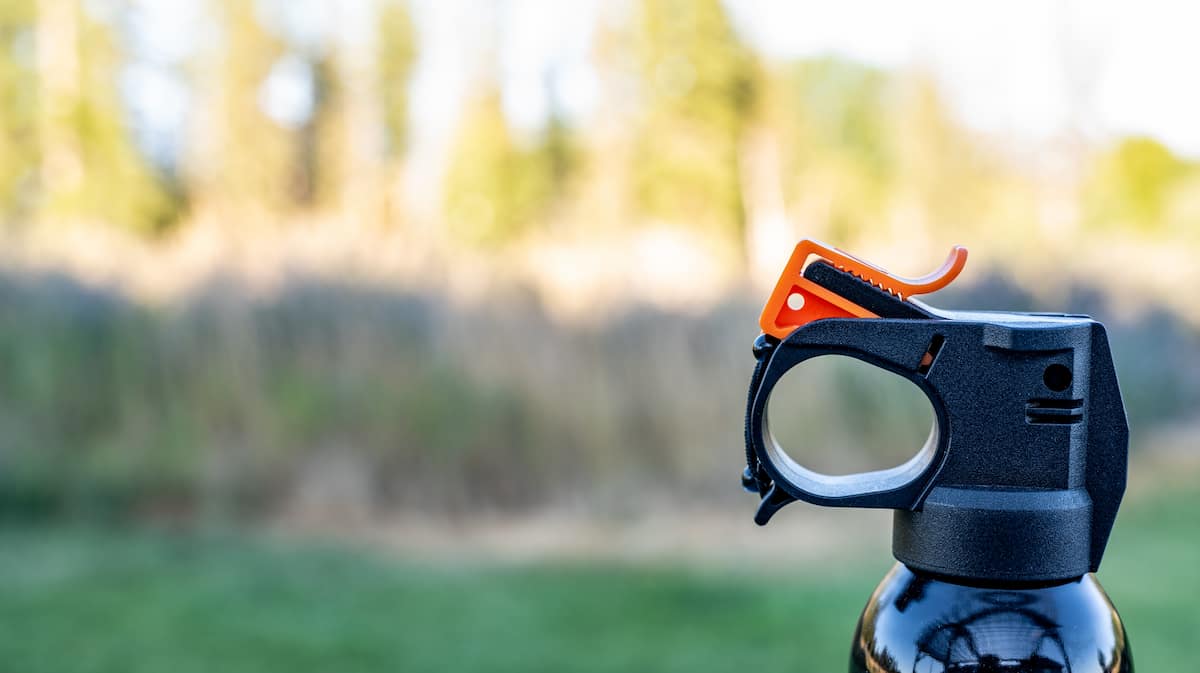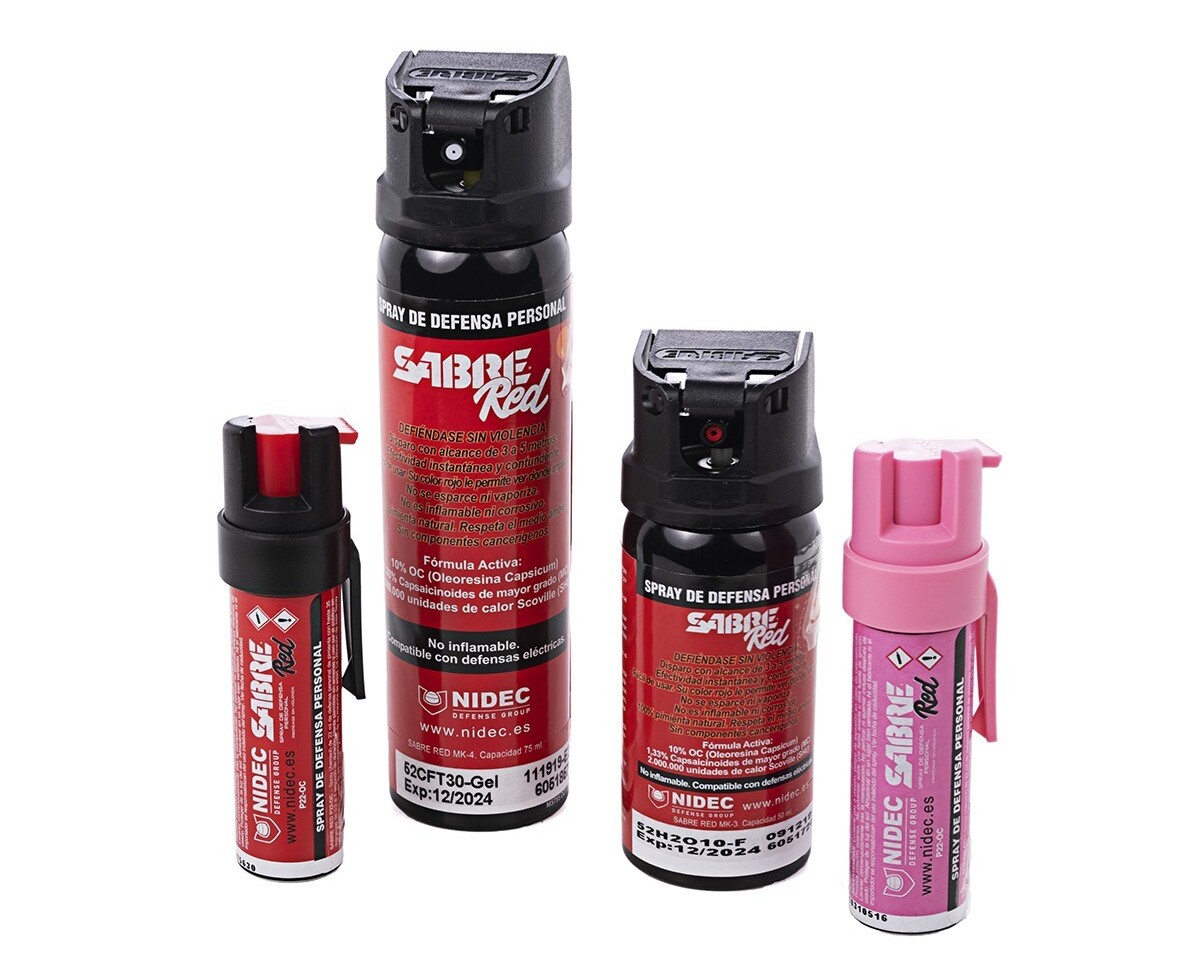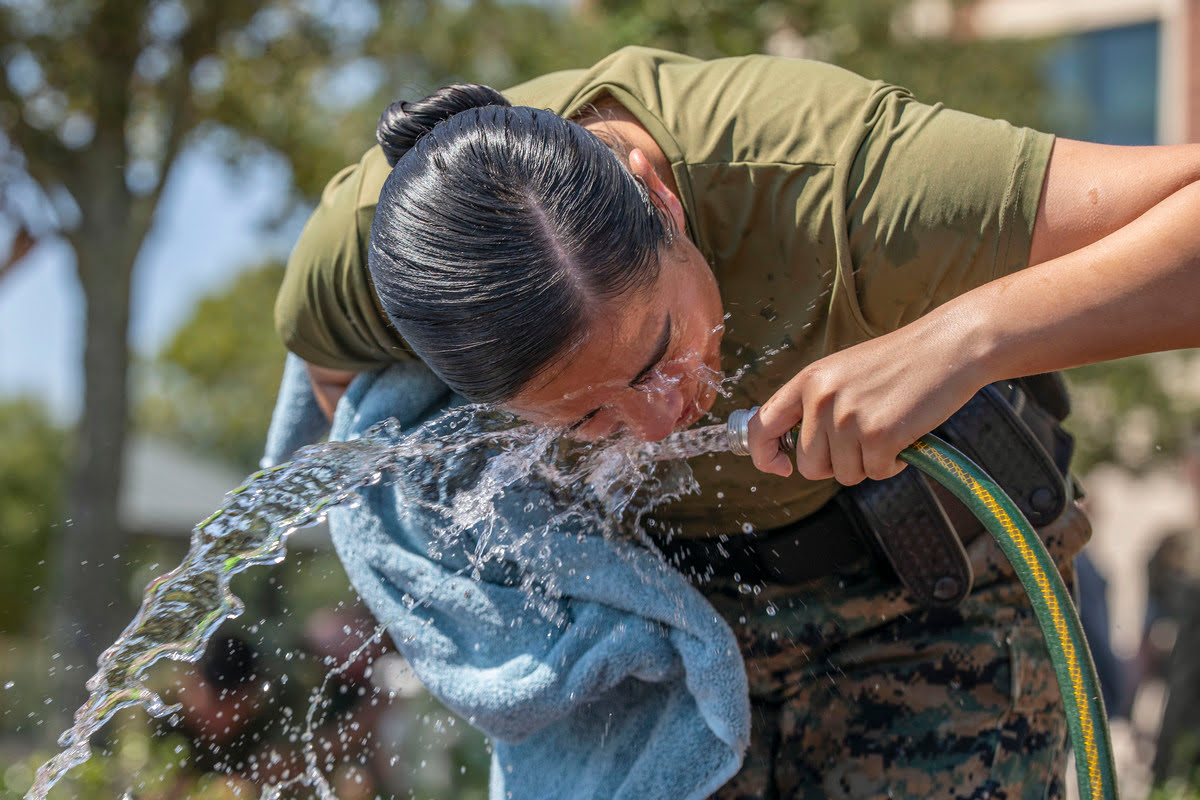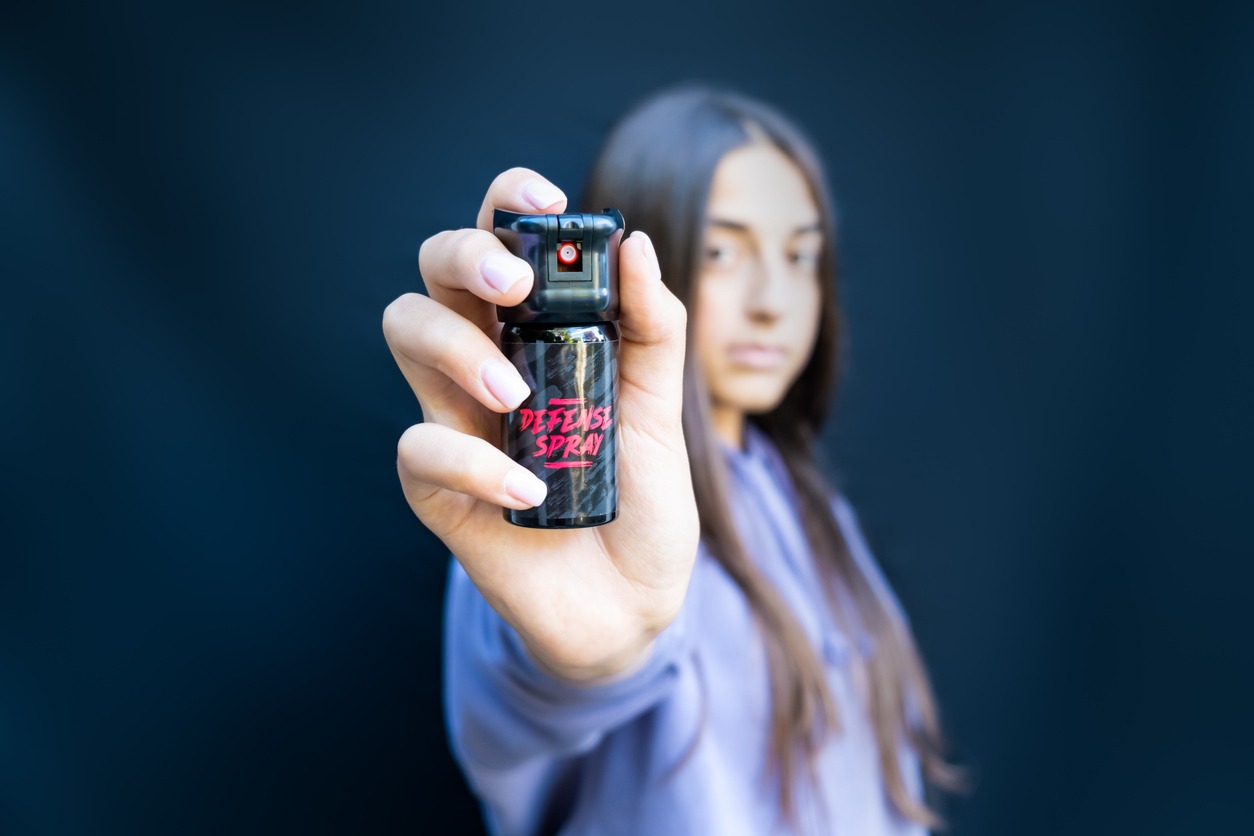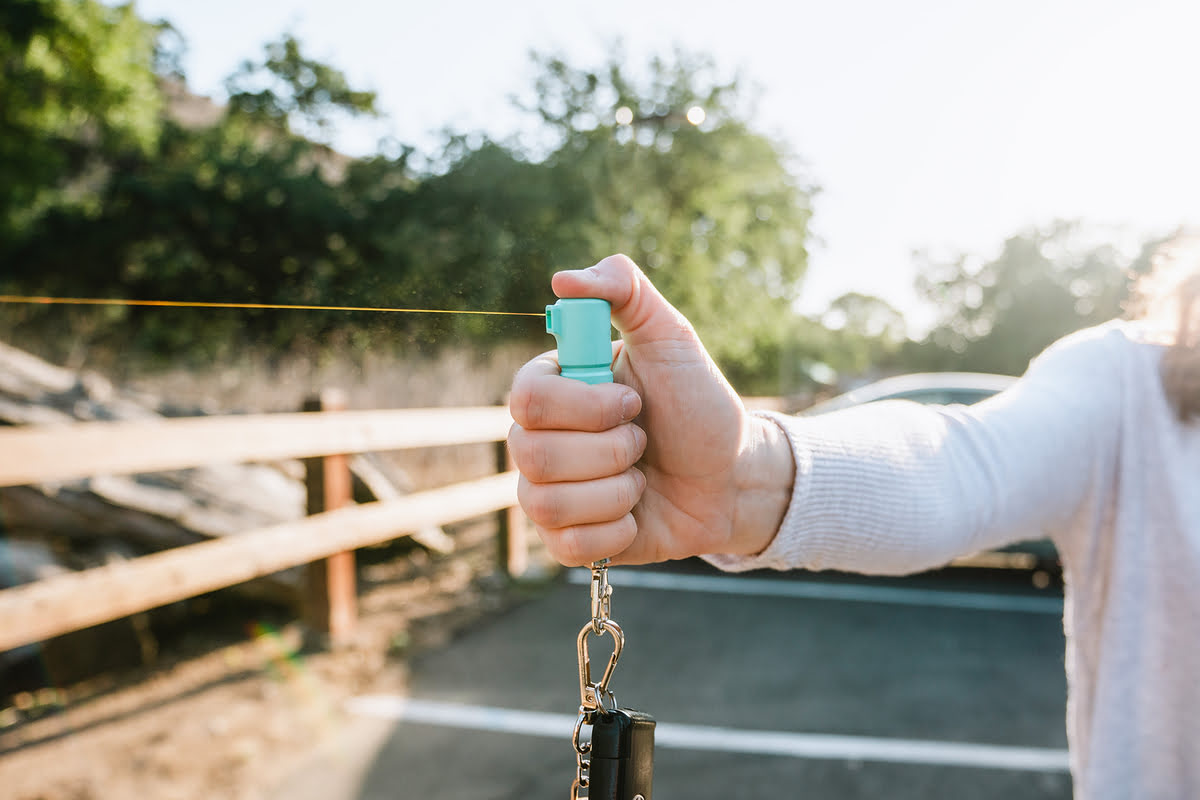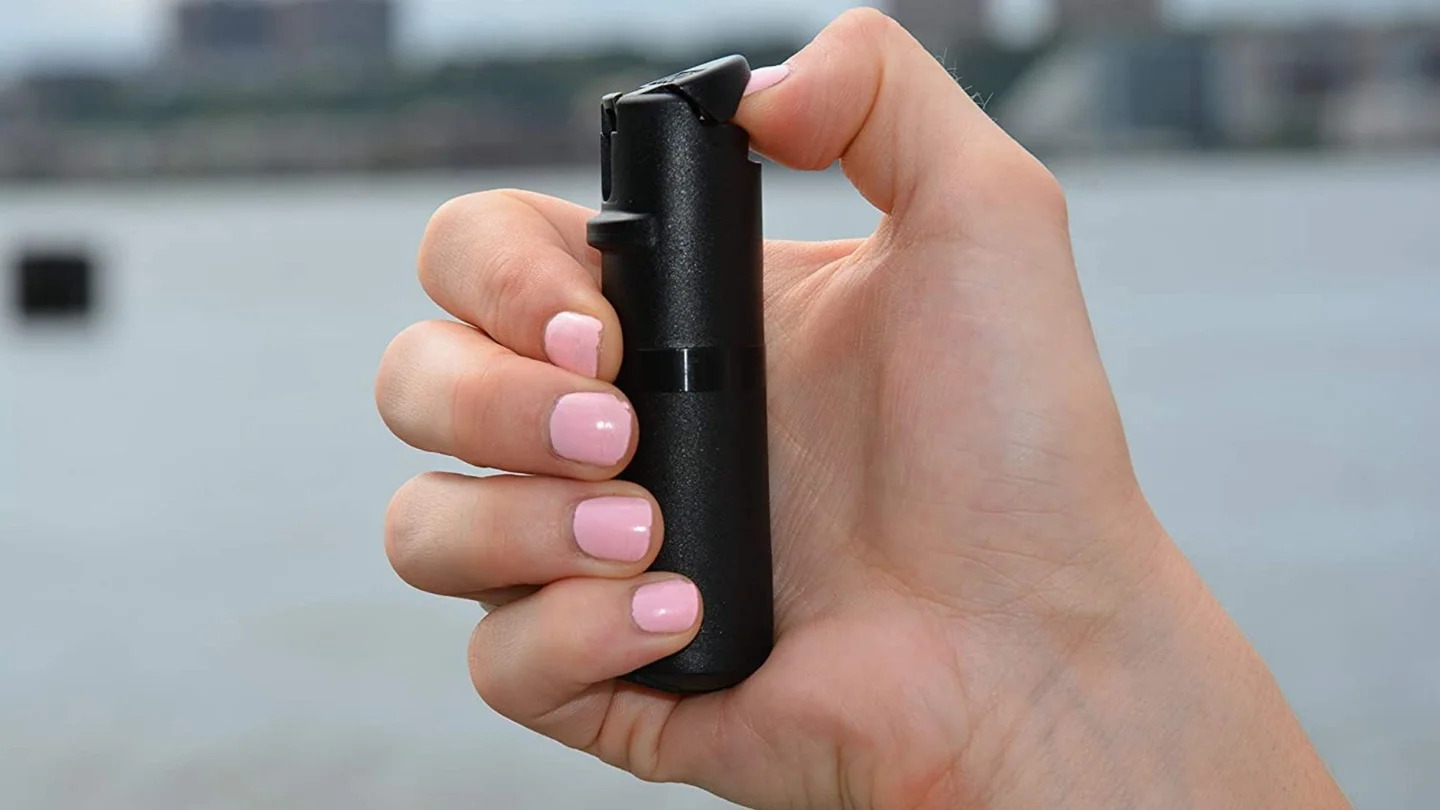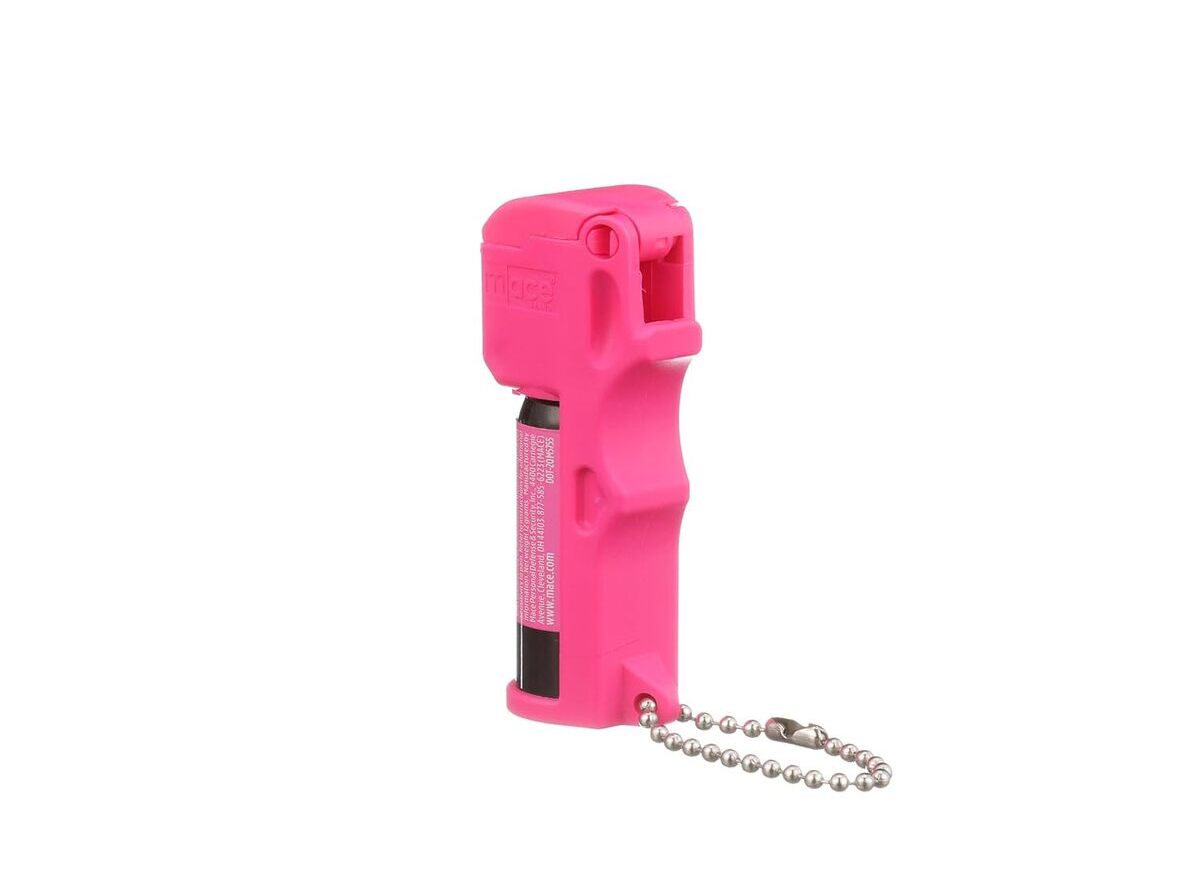Home>Home Security and Surveillance>What To Use Instead Of Pepper Spray


Home Security and Surveillance
What To Use Instead Of Pepper Spray
Modified: March 6, 2024
Looking for alternatives to pepper spray for home security and surveillance? Discover effective options to protect yourself and your loved ones without relying on harsh chemicals.
(Many of the links in this article redirect to a specific reviewed product. Your purchase of these products through affiliate links helps to generate commission for Storables.com, at no extra cost. Learn more)
Introduction
When it comes to personal safety, having effective means of self-defense is essential. While pepper spray is a popular choice for many individuals, there are situations where its use may not be practical or even legal. Whether you’re looking for an alternative to pepper spray or simply want to explore different options, this article will provide you with a comprehensive guide to other self-defense tools that can help you stay safe in a variety of situations.
Before we delve into the alternatives, it’s important to remember that each self-defense tool has its own unique advantages and limitations. It’s crucial to consider legal regulations and safety guidelines when choosing an alternative to pepper spray. Always prioritize your personal safety and familiarize yourself with the laws in your area regarding the possession and use of self-defense tools.
Key Takeaways:
- Stay Safe with Alternatives to Pepper Spray
Explore personal alarms, stun guns, Tasers, and self-defense keychains as effective alternatives to pepper spray. Remember to prioritize safety, understand legal regulations, and practice responsible usage. - Enhance Your Safety Arsenal
Consider bear spray, UV dye markers, and tactical flashlights as additional tools for self-defense. Prioritize prevention and situational awareness, and seek professional guidance when necessary.
Read more: What Pepper Spray Do Police Use
Legal and Safety Considerations
Prior to selecting an alternative to pepper spray, it’s crucial to understand the legal and safety considerations associated with each option. Keep in mind that laws regarding self-defense tools can vary from one jurisdiction to another, so it’s important to research and comply with the specific regulations in your area.
In addition to legal considerations, it’s essential to prioritize personal safety when using any self-defense tool. Proper training, practice, and awareness of your surroundings are key factors in effectively and safely using these alternatives.
It’s important to note that while alternatives to pepper spray are designed to incapacitate an assailant, they don’t guarantee complete protection. They should be seen as tools to help create an opportunity for escape or to attract attention for assistance. It’s always preferable to avoid potential confrontations whenever possible and to rely on law enforcement authorities for assistance when necessary.
Remember, using any self-defense tool should be a last resort and should only be utilized when you or someone else is in immediate danger. It’s important to familiarize yourself with the proper technique, limitations, and potential effects of each alternative. Now, let’s explore some viable options that can serve as alternatives to pepper spray.
Personal Alarms
Personal alarms are a popular alternative to pepper spray, particularly for individuals who may be uncomfortable with the idea of using physical force. These compact devices emit a loud, attention-grabbing sound when activated, which can startle and deter potential attackers.
One of the main advantages of personal alarms is their ease of use. They usually come in the form of keychains or small devices that can be carried discreetly. In an emergency situation, you can simply activate the alarm by pushing a button or pulling a pin, instantly alerting those nearby.
The sound produced by personal alarms can reach up to 130 decibels, which is equivalent to the noise level of a jet engine. This high-pitched noise not only startles the assailant but also draws attention from others in the vicinity, increasing the likelihood of help coming your way.
Some personal alarms come equipped with additional features, such as built-in LED lights or panic buttons that can alert emergency services. These added functionalities can provide an extra layer of security and assistance in dire situations.
It’s important to note that personal alarms do have limitations. While they can create a diversion and buy you time to escape, they do not physically incapacitate an attacker. Therefore, it is crucial to combine personal alarms with situational awareness and have a plan for self-defense or escape.
When choosing a personal alarm, consider factors such as the sound level, durability, and battery life. It’s also important to test the alarm regularly to ensure it is in proper working condition when needed. Personal alarms can be a valuable tool in personal safety, offering peace of mind and an audible deterrent against potential threats.
Stun Guns
Stun guns are another widely-used alternative to pepper spray, offering a non-lethal form of self-defense. These handheld devices are designed to deliver a high-voltage shock to an attacker, temporarily incapacitating them and giving you an opportunity to escape.
Stun guns work by delivering an electrical charge when the prongs on the device make contact with the assailant’s body. This charge disrupts the attacker’s nervous system, causing confusion, loss of muscle control, and disorientation.
One of the main advantages of stun guns is their effectiveness in close-range encounters. They can incapacitate an attacker even if they are wearing thick clothing or have a high pain threshold. Stun guns are also easy to use and typically require minimal training or physical strength to operate.
It’s important to mention that stun guns have safety features, such as a disable pin or a wrist strap to prevent the device from being used against you. These features ensure that the stun gun cannot be turned against the owner if it is taken away during an altercation.
However, it’s crucial to note that stun guns have limitations as well. They require direct contact with the attacker’s body to be effective, meaning you must be in close proximity to your assailant. Stun guns may not be suitable for individuals who are not comfortable with close-quarters combat or prefer a more hands-off approach to self-defense.
Additionally, stun guns are illegal or heavily regulated in some jurisdictions. Make sure to research and comply with the local laws regarding their possession and use.
When considering a stun gun, look for reputable brands that offer reliable devices with safety features. Consider factors such as voltage, size, and ease of use. It’s important to understand how to properly operate and maintain the stun gun to ensure its optimal functioning when needed.
Remember, stun guns should only be used in situations where immediate self-defense is necessary and should not be used as a form of aggression or intimidation.
Tasers
Tasers are a self-defense tool that is often mistaken for stun guns, but they work on a different mechanism. While stun guns require direct contact with the assailant’s body, Tasers can be deployed from a distance, providing a safer option for self-defense.
A Taser delivers an electrical shock through two prongs that are connected to the device by thin, insulated wires. When the prongs make contact with the attacker’s body, the Taser releases a high-voltage electrical charge that disrupts the attacker’s muscular control, rendering them temporarily incapacitated.
One significant advantage of Tasers is their ability to incapacitate an assailant even through clothing or a thick layer of skin. They allow for a safe distance between you and the attacker, reducing the risk of physical harm during a dangerous situation. Tasers are also equipped with features like laser targeting and integrated LED lights, aiding in accurate aiming and improving visibility in low-light conditions.
It’s important to note that Tasers are firearm-like devices and are subject to strict regulations in many jurisdictions. Some jurisdictions restrict their ownership to law enforcement and authorized personnel only. Make sure to thoroughly research and comply with the legal regulations in your area before considering a Taser as a self-defense option.
Training and familiarity with the Taser device are crucial for its effective and safe use. Many manufacturers provide training programs or recommend seeking professional instruction to ensure you are confident and proficient in operating the Taser.
When considering purchasing a Taser, it’s important to choose a reliable brand and model. Look for features such as safety mechanisms to prevent accidental discharge, rechargeable batteries, and durability. Familiarize yourself with the laws regarding Taser ownership and use in your region, and only use a Taser as a last resort for self-defense.
Remember, the use of a Taser should always be governed by a sense of responsibility, and these devices should be used ethically and legally to protect yourself and others.
Read more: What Is Pepper Spray
Self-Defense Keychains
Self-defense keychains are compact and discreet tools that can provide an added sense of security wherever you go. These keychains are designed with features that can be used for self-defense purposes in case of an emergency.
One common feature of self-defense keychains is a sturdy, pointed tip that can be used to strike an assailant with precision. These tips are typically made of durable materials such as metal or hardened plastic to maximize their effectiveness.
In addition to the pointed tip, some self-defense keychains may include other features like knuckle dusters or finger grooves. These elements allow you to maintain a secure grip while delivering a strong strike to an attacker, increasing your chances of fending off an assailant and protecting yourself.
Self-defense keychains are lightweight, portable, and often come with a keyring attachment, making them easy to carry with your keys or attach to a bag or belt loop. Their inconspicuous design ensures that they blend in with everyday items, reducing the risk of drawing unwanted attention.
While self-defense keychains can be an effective tool in certain situations, it’s crucial to remember that they require proper training and practice to be used correctly. Understanding how to strike with force and accuracy, as well as being aware of the vulnerabilities of an assailant’s body, are essential for utilizing these tools effectively.
It’s important to note that self-defense keychains may not be legal in all jurisdictions. Some areas may classify them as concealed weapons or offensive weapons, so make sure to familiarize yourself with local laws and regulations before purchasing or carrying one.
When choosing a self-defense keychain, look for one that is made of durable materials and is comfortable to hold. There are various designs and options available, so choose the one that best suits your preferences and needs.
Remember, self-defense keychains should be used responsibly and only in situations where there is an immediate threat to personal safety. They are meant to provide a means of escape or create an opportunity to seek help rather than for initiating or escalating violence.
Consider using a personal safety alarm or a stun gun as an alternative to pepper spray. These can help deter attackers and alert others to your situation. Always check local laws and regulations before purchasing and using these alternatives.
Whistles
Whistles may seem like a simple tool, but they can be a powerful and effective alternative to pepper spray for personal safety. These small, portable devices emit a loud, piercing sound that can attract attention and deter potential attackers.
One of the main advantages of using a whistle for self-defense is its simplicity. Whistles are easy to carry, lightweight, and require no special training or techniques to use effectively. With a quick blow into the whistle, you can generate a high-pitched sound that can startle and disorient an assailant.
The loud noise produced by a whistle not only alerts those nearby to a potentially dangerous situation but also creates a distraction, giving you a valuable opportunity to escape or seek help.
Whistles are particularly useful in outdoor settings or areas with limited access to other people. They can quickly draw attention in secluded areas or during nighttime when visibility may be reduced.
It’s important to remember that not all whistles are created equal. Look for whistles that are specifically designed for self-defense purposes. These whistles typically produce a louder and more piercing sound compared to regular whistles used for sporting events or referees. Some self-defense whistles are also equipped with additional features like a built-in compass or LED lights, further enhancing their functionality in emergency situations.
Practice using the whistle to ensure you can generate a loud and clear sound when needed. It’s also important to familiarize yourself with local laws and regulations regarding the use of whistles for self-defense in your area.
A whistle should be seen as a supplement to personal safety practices and situational awareness. By incorporating a whistle into your personal safety routine, you can add an extra layer of protection and improve your chances of getting attention and assistance in times of need.
Remember, prevention is always the best form of self-defense. Stay vigilant, be aware of your surroundings, and trust your instincts. Using a whistle in combination with other self-defense strategies can help you feel more empowered and confident in your personal safety.
Bear Spray
Bear spray, also known as bear deterrent spray, is a specialized type of pepper spray that is formulated to deter bear attacks. While primarily designed for deterring bears, it can also serve as an effective alternative to pepper spray for personal self-defense in certain situations.
Bear spray contains a powerful irritant derived from hot peppers, specifically formulated to temporarily incapacitate bears without causing them permanent harm. The spray creates a mist that can quickly and effectively deter an aggressive bear by causing temporary blindness, difficulty breathing, and intense irritation to the eyes, nose, and throat.
One of the advantages of bear spray is its wide spray pattern, which allows for maximum coverage and the ability to target multiple assailants or threats. The strong, concentrated formula is designed to provide enough stopping power and distance to allow for a safe escape opportunity.
Bear spray cans are typically larger in size compared to regular pepper spray cans, with a range that can reach up to 30 feet or more. This extended range provides a level of safety by allowing you to maintain distance from the threat while still effectively deterring the attacker.
It’s important to note that while bear spray is effective against bears and can be used for self-defense against other animals or human attackers, it is not specifically formulated for human use. However, the irritant in bear spray can cause temporary incapacitation and can give you valuable time to escape or seek help in a threatening situation.
It’s crucial to use bear spray responsibly and familiarize yourself with local laws and regulations regarding its possession and use. Additionally, make sure to seek proper training and practice using bear spray to ensure you can deploy it effectively and safely when needed.
When selecting bear spray, look for products that are specifically labeled as meeting the standards for deterring bears. These sprays often have a higher concentration of capsaicin, the active ingredient in pepper spray, to ensure maximum effectiveness.
Remember, bear spray should be used as a last resort in situations where there is an immediate threat to personal safety. Proper usage and responsible handling are essential for maximizing its effectiveness and minimizing potential harm.
Always prioritize personal safety and take necessary precautions to avoid encounters with potentially dangerous animals or individuals whenever possible.
UV Dye Markers
UV dye markers are a unique alternative to pepper spray that can aid in self-defense by marking an attacker for future identification. These markers contain a special dye that is invisible to the naked eye but becomes visible under UV light.
When sprayed onto an assailant, the UV dye leaves a distinct mark on their skin, clothing, or other surfaces. This marking can serve as evidence for law enforcement and help in identifying the attacker after the incident.
One of the main advantages of UV dye markers is their non-lethal nature. Unlike pepper spray, which can cause temporary pain and discomfort, UV dye marks are relatively harmless and do not cause physical harm to the attacker.
In addition to their self-defense capabilities, UV dye markers can also act as a deterrent. The knowledge that an assailant may be marked with a unique and traceable dye can discourage further aggression or assailant pursuit.
UV dye markers are discreet and easy to carry, often in the form of a small canister or spray pen that can be kept in a pocket, purse, or bag. They can provide an added sense of security, especially in situations where the use of physical force may not be possible or desired.
It’s important to note that UV dye markers should be used responsibly and only in self-defense situations where you believe there is an immediate threat to your personal safety. Spray the marker directly at the assailant to ensure accurate marking.
The effectiveness of UV dye markers relies on the availability of UV light, so it’s recommended to have a portable UV light source readily accessible. This will allow you or law enforcement to quickly identify the marked individual in case of an incident.
As with any self-defense tool, it’s important to familiarize yourself with local laws and regulations regarding the possession and use of UV dye markers in your area. Additionally, seek proper training and practice using the marker to ensure you can deploy it accurately and efficiently when needed.
When choosing a UV dye marker, consider factors such as the visibility and longevity of the dye, as well as the ease of use and portability. Opt for reputable brands that offer quality products to ensure maximum effectiveness.
Remember, the primary purpose of UV dye markers is to aid in identification and assist law enforcement in apprehending an assailant. While it can act as a deterrence, personal safety should always remain the top priority, and avoidance of potentially dangerous situations is always the best course of action.
Read more: Sabre Pepper Spray: How To Use
Tactical Flashlights
Tactical flashlights are versatile tools that can serve as an effective alternative to pepper spray for self-defense purposes. These flashlights are specifically designed for tactical or personal security use and offer several features that can help deter potential threats.
One of the primary functions of tactical flashlights is to provide a powerful beam of light. These flashlights are designed to emit a bright, focused light that can temporarily blind or disorient an assailant, allowing you precious seconds to react, escape, or call for help.
Tactical flashlights are typically constructed with durable materials and feature a rugged design, making them suitable for self-defense situations. They are often built to withstand impact and are water-resistant, ensuring their reliability in various environments.
Many tactical flashlights also include additional features such as a strobe mode, which emits a rapid blinking light that can further disorient and confuse an attacker. Some models may also have a bezel or crenulated edge around the head of the flashlight, which can be used as a striking tool in close-quarters combat.
One of the advantages of tactical flashlights is their everyday utility. They can be used for various tasks such as navigating in the dark, signaling for help, or finding lost items. Their dual functionality as both a practical tool and a self-defense device makes them a valuable investment.
Tactical flashlights come in different sizes and power levels, so it’s essential to choose one that fits your specific needs. Consider factors such as size, weight, brightness, and battery life when making your selection.
It’s important to note that although tactical flashlights can disorient an assailant, they may not physically incapacitate them. Therefore, proper self-defense techniques and personal safety practices should be employed in conjunction with the use of a tactical flashlight.
Remember, using a tactical flashlight responsibly means being aware of your surroundings and avoiding dangerous situations whenever possible. Having a tactical flashlight on hand can provide an additional tool for self-protection and increase your sense of security in various situations.
As always, become familiar with the local laws and regulations regarding the use and carry of tactical flashlights in your area, as they may be subject to certain restrictions.
Conclusion
When it comes to personal safety, having effective means of self-defense is vital. While pepper spray is a popular choice, there are situations where its use may not be practical or even legal. Fortunately, there are several alternatives to pepper spray that can provide you with peace of mind and an added layer of protection.
Personal alarms offer a loud and attention-grabbing sound to startle potential attackers and attract help. Stun guns and Tasers deliver an electrical shock to incapacitate assailants, with Tasers providing the advantage of distance. Self-defense keychains provide a discreet and portable option with features like pointed tips for striking. Whistles offer a simple yet effective way to attract attention and disorient attackers.
Bear spray, originally designed for deterring bears, can also be used as an effective self-defense tool due to its wide spray pattern and incapacitating effects. UV dye markers provide a means of marking assailants for future identification. Tactical flashlights emit a strong beam of light to temporarily blind and disorient attackers.
However, it’s important to understand the legal and safety considerations for each alternative. Familiarize yourself with local laws and regulations and make sure to practice safe usage and responsible handling of these tools.
Ultimately, prevention and situational awareness should be the foundation of personal safety. Avoiding potentially dangerous situations whenever possible and trusting your instincts are key components of self-defense. Consider seeking self-defense training to enhance your skills and confidence.
Remember, the goal of self-defense is to create an opportunity to escape and seek help. Always prioritize personal safety, seek professional guidance when necessary, and choose the self-defense tools that align with your comfort level and legal obligations.
By exploring and utilizing these alternatives to pepper spray, you can take proactive steps towards enhancing your personal safety and feeling more empowered in various situations.
Frequently Asked Questions about What To Use Instead Of Pepper Spray
Was this page helpful?
At Storables.com, we guarantee accurate and reliable information. Our content, validated by Expert Board Contributors, is crafted following stringent Editorial Policies. We're committed to providing you with well-researched, expert-backed insights for all your informational needs.

